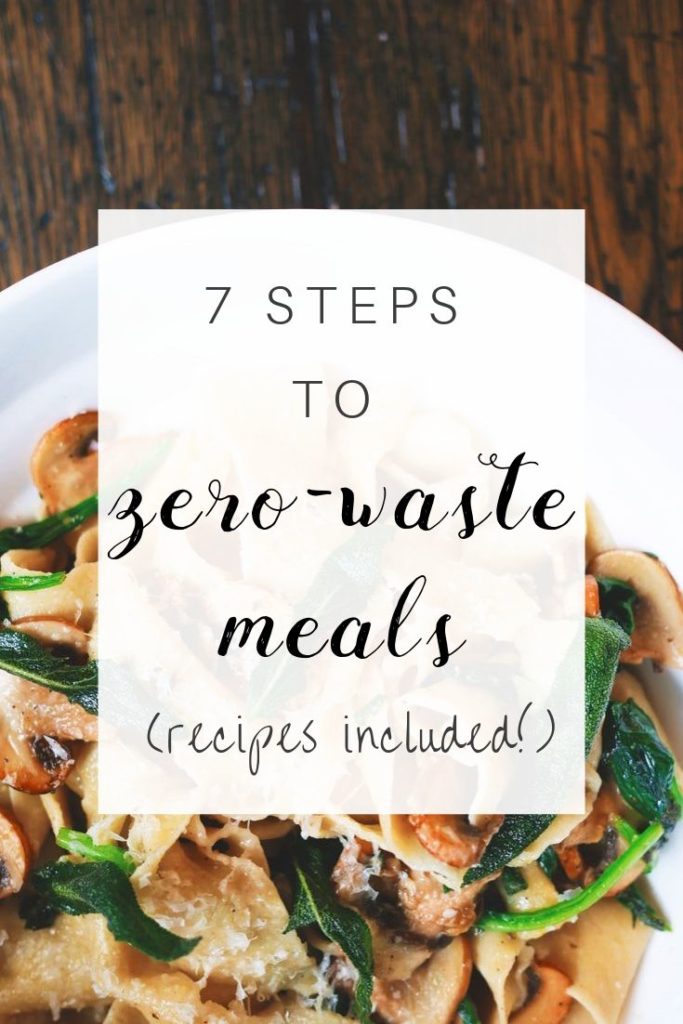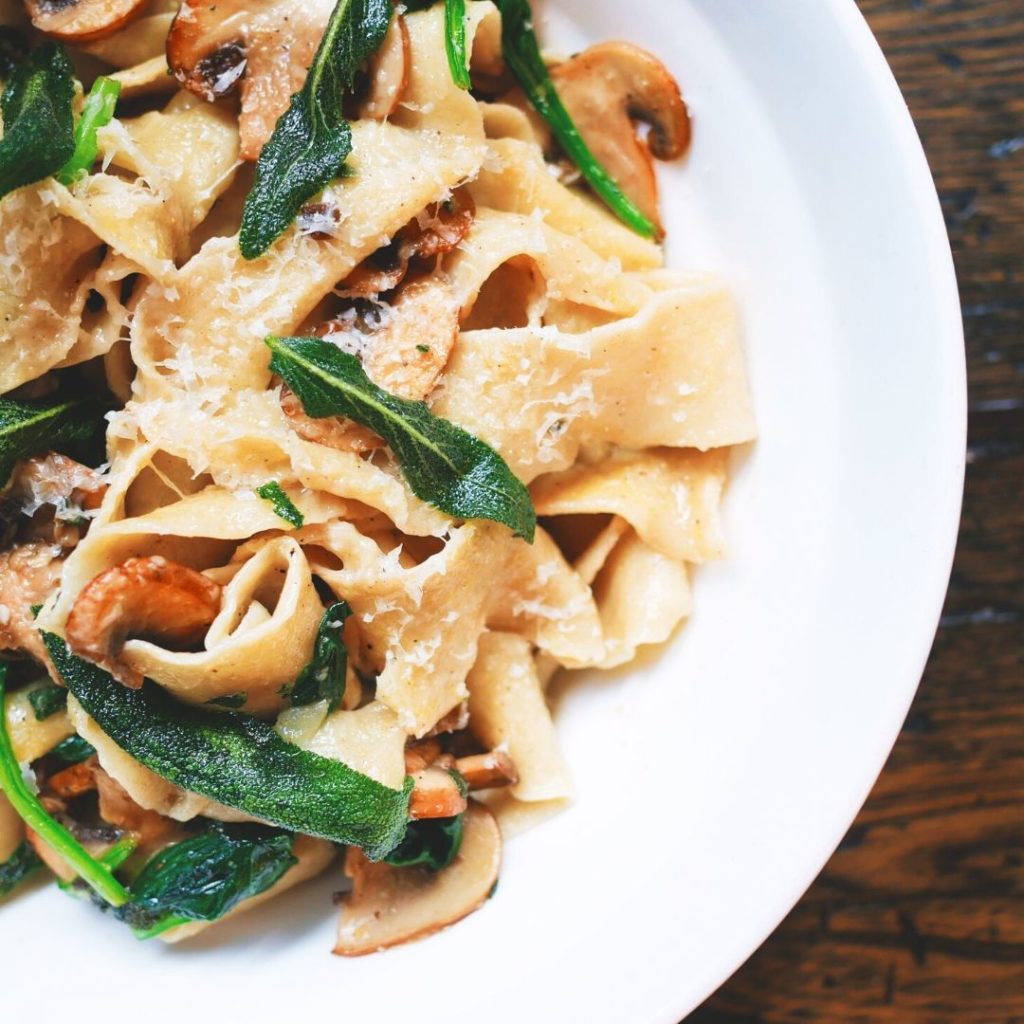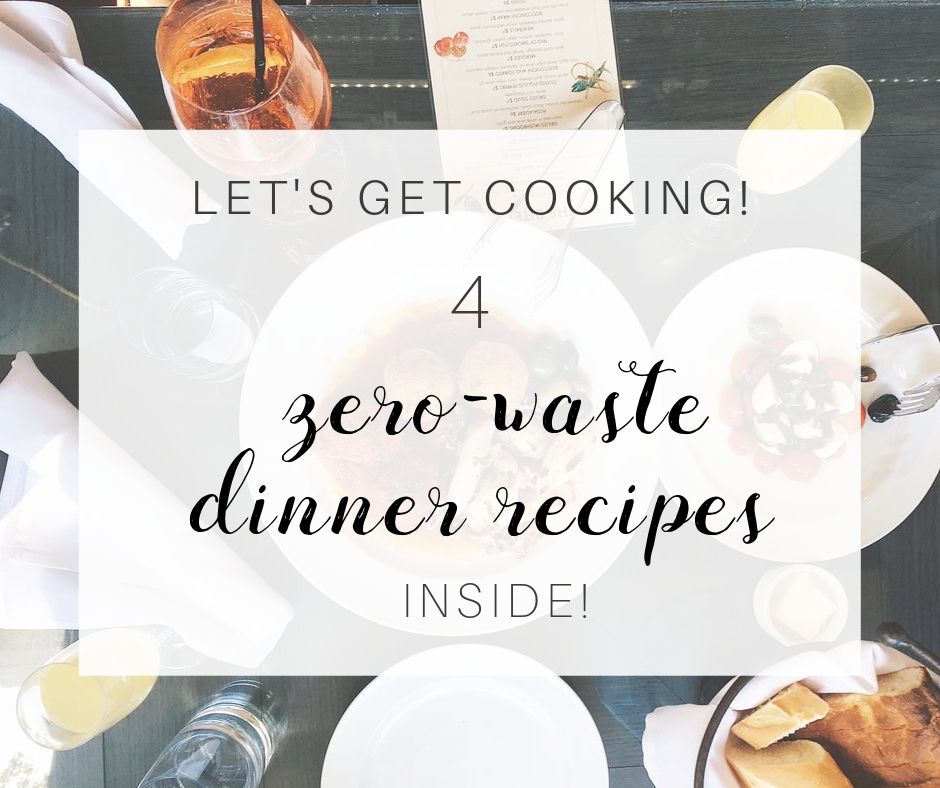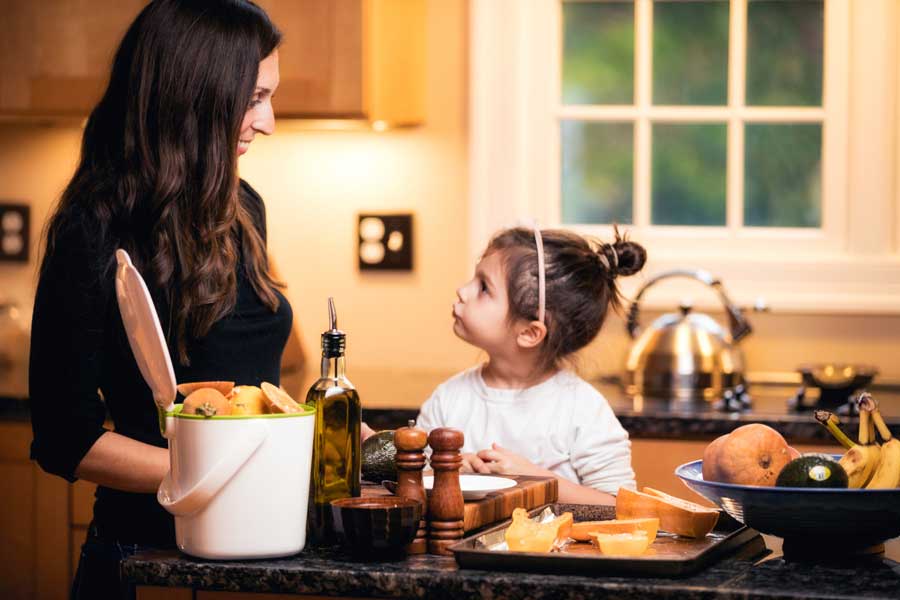How to Zero-Waste Meal Plan for Sanity
Find yourself wanting to meal plan the zero-waste, low-plastic way?
I’m here to help.
I’ve been meal planning for the last year. In this time, I’ve tweaked my method + updated my routine to reflect my low-plastic, zero-waste principles.
Today I’m outlining in 7 steps exactly how I feed my family 3 low-plastic meals a day.
First things first. Why did I start meal planning + prepping?
– Before, cooking for my family required significant mental energy. I dreaded dinner because I never knew what I was serving until the last possible minute.
– We often ate out because I had failed to plan properly for the week’s meals; as such, my family spent more money than necessary at restaurants.
– My husband + I put on a few extra pounds. I found myself wondering whether these extra pounds were due to consuming extra calories from restaurant food.
– I resorted to frozen pizza + other unhealthy meals more often than I preferred. Weeknights were hectic + so I cut corners to ease my burden. I knew that with a bit of planning + forethought I could do better.
Why zero-waste meal plan?
_____
1. You save precious time.
When you make all your meals for the week at once, you make one big mess in the kitchen just one time (instead of 7!).
Here’s just one example. Need one onion in two different meals? That’s 2 chopped onions. When you chop them both at once you save yourself the hassle of two separate onion cleanups.
That 5 minutes here, 5 minutes there? Stealing time in this manner really does add up.
2. You make far fewer trips to the grocery store.
These days I go to the supermarket just once per week.
Before zero-waste meal planning, I used to stop by All. The. Time. I wasted precious time at the grocery store because I hadn’t adequately planned for the week.
I also spent money because I never bought just one thing. By buying more than I needed Iwasted more than I would have liked.
3. You slash into food waste.
When you zero-waste meal plan, you eat what you already have. That’s because you plan your meals around what needs to be eaten.
4. You save money.
If you’re wondering whether meal planning saves money, the answer is yes.
The average amount my family of 4 spends per week on groceries is $208.33.
That’s just $2.47 per person per meal.
Did you know?
You can find The Sustainable Minimalists Podcast wherever you get your podcasts.
Apple Podcasts | Google Podcasts | Spotify | Stitcher
How to meal plan the zero-waste way
Step 1. Find a quiet place.
_____
You do your best work when you give a task your undivided attention.
I can’t concentrate with my two daughters jumping, whooping, dancing + arguing beside me.
So I meal plan when they’re asleep or at school or when my husband is entertaining them. And I only plan when I know I have 30 minutes of uninterrupted time.
Step 2: Gather your supplies.
_____
Pull down some cookbooks (not all of them!). Have your phone or computer nearby, too.
Grab a pad of paper + a pencil nearby with an eraser.
Use Pinterest to pin tasty-looking recipes? Have Pinterest on hand, too.
Step 3: Peruse your refrigerator, freezer and pantry.
_____
Meal planning expert Staci Ducharme famously keeps a running list of the items in her freezer + crosses them off as they’re eaten.
If you like lists + you’re diligent about updating them, go for it. If not, it pays (literally!) to know what you already have.
Open the drawers of the fridge. Shake the milk carton. Move things around so you miss nothing.
Know which food items you have on hand as well as those nearing expiration.
Snag 4 low-waste, plastic-free dinner ideas here (they’re easy, too!)
Step 4: Plan your week’s meals by starting with dinner.
_____
Dinner is the most complicated meal of the day + that’s why it’s the hardest one to plan for.
Choose 7 dishes – one for each night of the week – with intention. Consider the following tips:
– K.I.S.S. (Keep It Simple, Stupid!)
Choose easy-ish meals you know your family will eat.
Whenever possible, choose recipes with 5 ingredients or less. (These meals tend to be cheaper, healthier, use less plastic + are less-time consuming.)
If you’re feeling adventurous, choose just one moderately time-consuming recipe per week. (Just one!)
– Plan around what you already have.
This is how you save money + reduce food waste.
Have a wilting head of broccoli in your crisper? Write broccoli on your meal plan as Monday night’s vegetable.
Don’t buy another vegetable if you already have one! Make sure you write it down on your real plan so you don’t forget.
– Make bulk bin staples the center of the meal.
Don’t be afraid of the bulk bins!
Pasta, rice, lentils + beans are often found in supermarket bulk bins. Highlight these items by making them the center of your dinners instead of meat or fish.
Go to a store that allows you to bring containers from home. Call ahead if you aren’t sure.
Buy spices from bulk bins, too: They’ll be more potent + much cheaper.
– Make your busy night your crockpot night.
On Wednesday evenings, my daughter has dance class. That’s why I never make a meal on Wednesdays.
In my household, Wednesday is crockpot night, every week.
– Make one meal leftover night, with a twist.
No one likes hangry kids, so prepare for leftover night, too.
On leftover night, keep an easy back-up meal on hand in the event you don’t have enough food.
In my house, Thursday night is leftover night. I always keep frozen ravioli or some other easy dinner nearby just in case we need it.
By the end of Step 4 you should have in front of you a comprehensive meal plan for the week.
Pat yourself on the back – the hard part is done!
Step 5. Draft your shopping list.
_____
Planning breakfast + lunch is simple. Just make sure everyone’s favorite items are on the grocery list.
For breakfast, I need eggs on hand; my family requests bagels, cheese, orange juice + bananas, too.
Lunches are generally dinner’s leftovers. My daughter has a thermos so she takes warm leftovers to school. She also takes pantry staples like olives + raisins so I need to make sure those items are on the list.
My husband takes either leftovers or a sandwich for lunch, so I always make sure I have sliced cheese + bread on the shopping list, too.
Step 5 is the most time-consuming. Aim to create a comprehensive shopping list that includes very few extra or unnecessary items. Make sure every item on your list has a purpose!
Don’t forget to double-check what you already have so you don’t purchase unnecessary ingredients.
Remember: Unnecessary purchases often become unnecessary waste.
Step 6: Go to the store.
_____
Aim to go to the store just once per week.
Buy what you have on your list. Not more.
Head to the bulk bins first for some serious savings.
Don’t forget your reusable grocery bags, your reusable produce bags or pillowcases + any other zero-waste shopping essentials before you head out.
[Related: Ways to take home less plastic at the supermarket.]
Step 7: Prep those meals.
_____
Here’s the truth: The more effort you put into meal prepping, the more time you’ll get back during the week.
But what does meal prepping mean, exactly?
– Meal prepping can be as complex as making an entire meal to be eaten later in the week.
If on Tuesday we’re eating chili, let’s say, I make the entire recipe on Saturday; I cook it, too. Then I keep it in its pot + store it in the fridge.
When Tuesday night rolls around, that pot goes back on to the stove to be heated up for dinner.
This way, preparing Tuesday’s dinner takes just 10 minutes.
– Meal prepping can be as simple as taking something out of the freezer to ensure it’s thawed when needed.
If I’m serving pasta with homemade pesto sauce during the week, I make sure the pesto sauce I made in the summer is out of the freezer.
This way, I’m certain it’ll be thawed when I’m ready to use it.
– Prepare your breakfasts + lunches, too, but only if your breakfasts + lunches require prepping.
Maybe you’ve noticed that oats from the bulk bin are much cheaper than oats in that cardboard can or in those individual packets.
But if you don’t have time in the morning to boil water to make oatmeal, prep your week’s oatmeal by using the overnight oatmeal method. You’ll have weekday breakfasts that are healthy, sugar-free, full of fiber, and zero-waste.
One final tip:
_____
Know that meal planning gets easier in time. It gets faster, too.
Never meal planned before? You’ll feel like a fish out of water at first, and that’s OK. But as you get better you’ll zero-waste meal plan with ease.
Do you meal plan + meal prep? Leave us your best tips in the comments, and thank you!





2 thoughts on “How to Zero-Waste Meal Plan for Sanity”
I really wish the UK would have bulk sections in regular supermarkets if supermarket shopping is something I really wanted to do, because it would save having to buy massive bags of stuff or go to zero waste shops just to get items like rice or lentils etc. Instead pretty much all the supermarkets are dedicated to packaged food. They drive me mad these days! In fact I can’t remember the last time I went to the supermarket by choice. This is in a way a good thing because I can try and support the local growers and producers of wherever I happen to be, but in a way an inconvenience if I want to buy everything all at once in the one place. I do find meal-planning helpful though, because as you say it saves time and money.
Hey Harmony, A lot of supermarkets in the US don’t have bulk sections, either, but some do. How about health food stores? Do they have bulk bins in the UK?
Comments are closed.